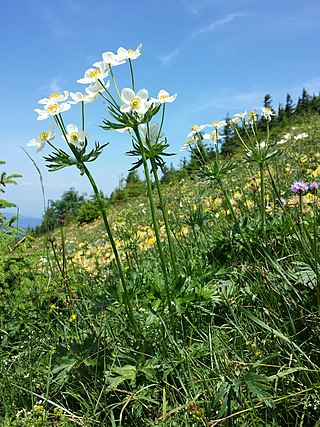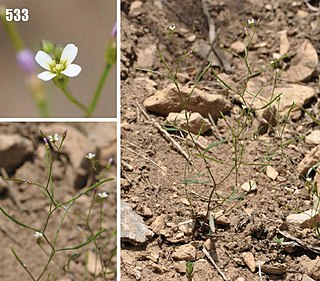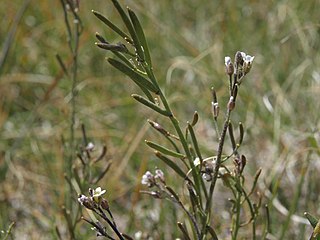
Cananga is a small genus of trees in the family Annonaceae, native to Indo-China and Malesia, but introduced elsewhere. One of its species, Cananga odorata, is important as the source of the perfume ylang-ylang.

Capparis is a flowering plant genus, comprising around 250 species in the family Capparaceae which is included in the Brassicaceae in the unrevised APG II system. These plants are shrubs or lianas and are collectively known as caper shrubs or caperbushes. Capparis species occur over a wide range of habitat in the subtropical and tropical zones.

Goniothalamus is one of the largest palaeotropical genera of plant in family Annonaceae.

Miliusa is a genus of plants in family Annonaceae. Species have been recorded from tropical and subtropical Asia to northern Australia.

Polyalthia is a genus of flowering plants in the family Annonaceae. There are approximately 90 species distributed from Africa to Asia and the Pacific.
Trivalvaria is a genus of plant in family Annonaceae. It is found in Tropical Asia including Hainan.

Artabotrys is a genus of plants in the Annonaceae family. There are over 100 species in the Old World tropics, with 31 species in Africa. It is part of the custard apple family (Annonaceae). All species are small trees or shrubs with a tendency to climb. Leaves are simple and alternate, without hairs. Bisexual flowers are borne singly or in clusters opposite the leaves. The 6-petalled flowers are scented, and the plant bears fleshy fruits.

The Malmeoideae are a subfamily of trees and other plants of the family Annonaceae.

Friesodielsia is a genus of flowering plants in the custard apple and soursop family Annonaceae, with all species found in the Old World, mostly in the tropics. A molecular study shows that Friesodielsia should be more narrowly circumscribed, with the only species remaining being the Asian ones, which can also be distinguished by their possession of globose or ellipsoid monocarps, and six petals per flower arranged in two whorls.

Anemonastrum is a genus of flowering plants in the family Ranunculaceae. Plants of the genus are native to the temperate and subarctic regions of North America, Greenland, Europe, Asia, South America, and New Zealand. The generic name Anemonastrum means "somewhat like anemone", a reference to the Anemone genus of closely related plants. It chiefly differs from Anemone in having a base chromosome number of x=7, as opposed to x=8.
Stelechocarpus is a genus of flowering plants belonging to the family Annonaceae.

Atelanthera is a genus of flowering plants belonging to the family Brassicaceae.
Bryocarpum is a genus of flowering plants belonging to the family Primulaceae.
Bythophyton is a genus of flowering plants belonging to the family Plantaginaceae.
Calathodes is a genus of flowering plants belonging to the family Ranunculaceae.

Crucihimalaya is a genus of flowering plants belonging to the family Brassicaceae.
Cyclocodon is a genus of flowering plants belonging to the family Campanulaceae.
Lepidostemon is a genus of flowering plants belonging to the family Brassicaceae.
Peracarpa is a genus of flowering plants belonging to the family Campanulaceae.
Pycnarrhena is a genus of flowering plants belonging to the family Menispermaceae.










